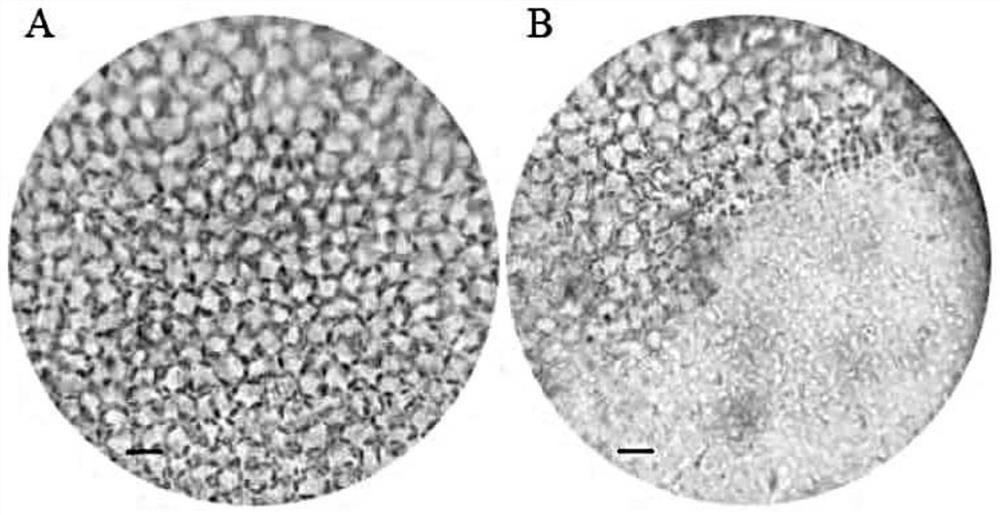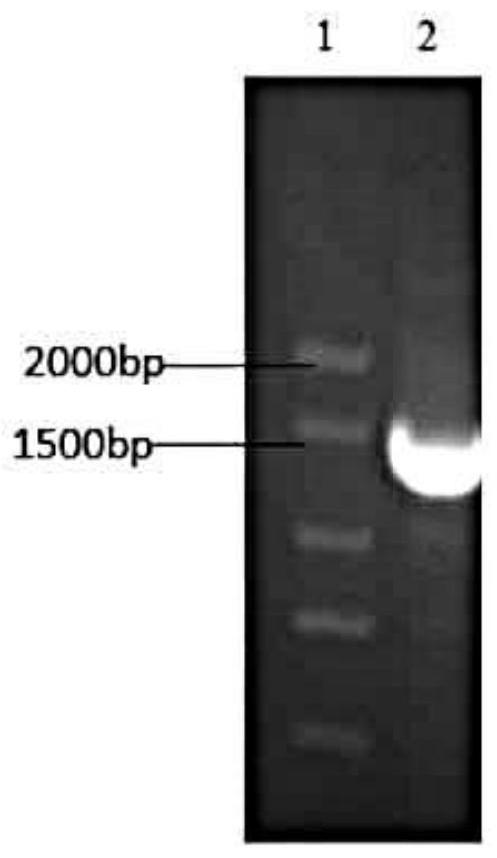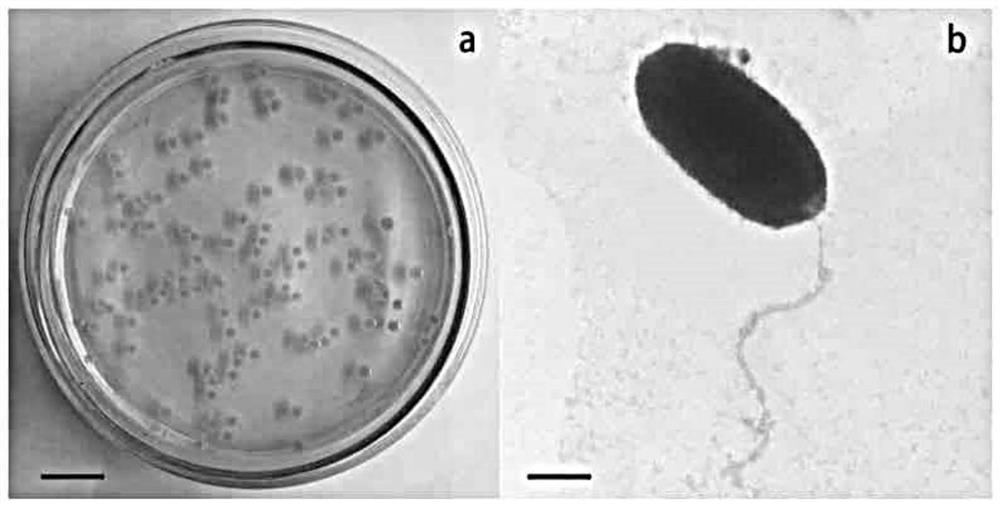A pathogenic bacterium of kelp albinism
A technology for albinism and pathogenic bacteria, applied in the directions of bacteria, biochemical equipment and methods, microorganisms, etc., can solve the problem of difficult to determine the pathogenic bacteria of kelp disease
- Summary
- Abstract
- Description
- Claims
- Application Information
AI Technical Summary
Problems solved by technology
Method used
Image
Examples
Embodiment 1
[0013] Embodiment 1: Isolation and purification of pathogenic bacteria
[0014] In December 2017, bacteria were isolated from albino kelp seedlings in a kelp nursery in Rongcheng, Shandong. Select the kelp seedlings with albinism, wash away the surface impurities with sterile seawater, and grind them into a homogenous slurry in a sterile mortar. Dilute the homogenate by 10 with sterile seawater -2 、10 -3 、10 -4 、10 -5 For gradient dilution, take a little (0.5mL) of different dilutions and spread them on Zobell 2216E solid medium with a triangular sterile glass coating rod. Cultivate in a constant temperature culture at 25°C for 24-72h, and observe the growth and shape of the colonies. Then use the inoculation loop to pick 10 -3 The colonies on the dilution gradient plate were further separated and streaked on Zobell 2216E solid medium, and purified until a single colony was isolated. In this purification experiment, a total of 10 purified strains were isolated, and it w...
Embodiment 2
[0015] Embodiment 2: the research of bacterial strain pathogenicity
[0016] Take out the preserved bacterial liquid from the -20°C refrigerator, absorb 1 mL into 100 mL Zobell 2216E liquid medium and cultivate in a shaking incubator. After 24 hours, absorb 1 mL into 100 mL Zobell 2216E liquid medium to continue culturing. After 12 hours, absorb 2 mL of overnight culture solution Continue to culture in 200mL Zobell 2216E liquid medium, the culture condition is 25°C, and the rotation speed is 120r / min. After 4 hours, the bacterial liquid was drawn to measure the concentration of the bacterial liquid. At this time, the growth of the bacterial solution is in the logarithmic growth phase.
[0017] Select healthy kelp seedlings in good growth state, place them in a petri dish filled with sterile sea water, and then cut the sporophytes into small pieces (1.0cmx1.0cm) with a sterilized blade. Put the kelp tissue block into the culture plate, and add 1mL X-8 bacterial solution (conc...
Embodiment 3
[0019] Embodiment 3: Analysis of pathogenic strains
[0020] Extract bacterial genomic DNA, the specific primer sequence information is as follows:
[0021] 27F: 5'-GAGTTTGATCCTGGCTCAG-3'; 1429R: 5'-GGTTACCTTGTTACGACTT-3' PCR amplification of 16S rDNA, the size of the amplified fragment is 1397bp ( figure 2 ).
[0022] After NCBI comparison, the screened strain X-8 had the highest similarity with two strains of piscicidal Pseudoalteromonas bacteria from the coast of Delaware, Pesudoalteromonas piscicida strain DE2-A and Pesudoalteromonas piscicida strain DE2-B; Therefore, it is named as Pseudoalteromonas X-8 strain (Pesudoalteromonas X-8). 17th; Preservation address: No. 3, Yard No. 1, Beichen West Road, Chaoyang District, Beijing.
[0023] The X-8 colonies are orange in color, opaque, raised, and have regular edges. Scanning electron microscopy revealed that X-8 is rod-shaped with polar single flagella ( image 3 ).
[0024] The culture conditions of the X-8 strain are...
PUM
 Login to View More
Login to View More Abstract
Description
Claims
Application Information
 Login to View More
Login to View More - R&D
- Intellectual Property
- Life Sciences
- Materials
- Tech Scout
- Unparalleled Data Quality
- Higher Quality Content
- 60% Fewer Hallucinations
Browse by: Latest US Patents, China's latest patents, Technical Efficacy Thesaurus, Application Domain, Technology Topic, Popular Technical Reports.
© 2025 PatSnap. All rights reserved.Legal|Privacy policy|Modern Slavery Act Transparency Statement|Sitemap|About US| Contact US: help@patsnap.com



